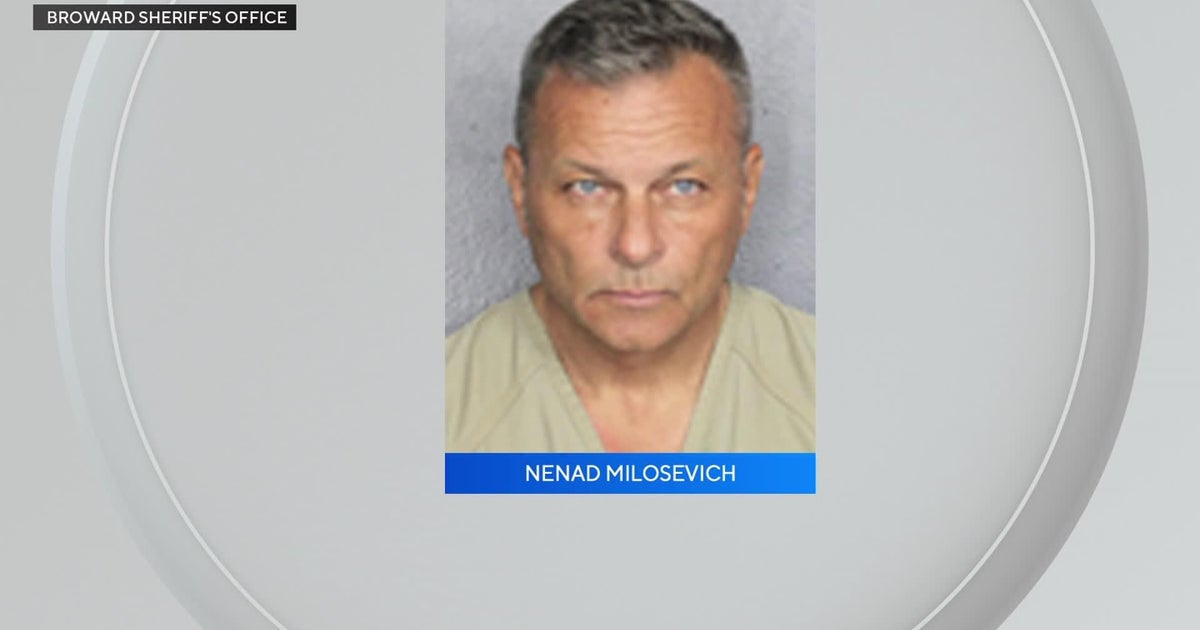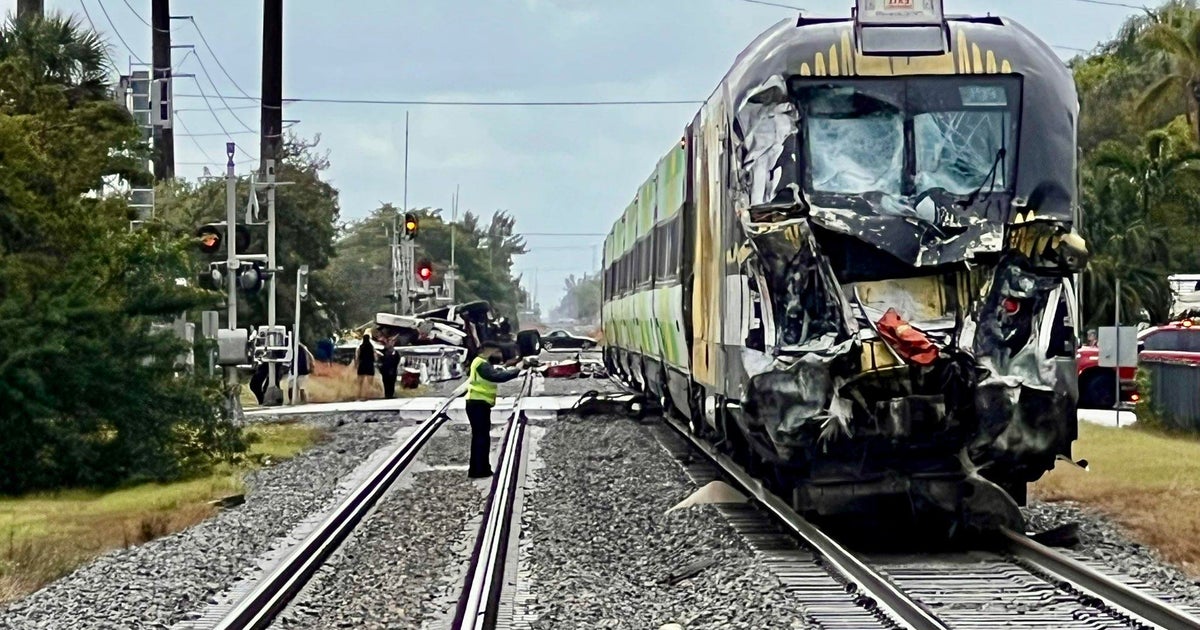A Night Inside Ryder Trauma Center
MIAMI (CBSMiami) – A little before midnight on a recent Friday, paramedics from the City of Miami brought in a man who had been found passed out in a Dumpster. Whether the man crawled into the Dumpster on his own or was tossed inside by others wasn't clear. A short time later a pair of car accident victims were flown into Ryder with serious – but not life threatening – injuries.
All in all a quiet night at Ryder.
But as is often the case with Ryder, it was merely the calm before the bedlam.
By 3 am, the trauma center's radio would crackle with news that two men had been shot in the City of Miami.
"Apparently we're getting someone who was shot multiple times and we don't know where all the injuries are," said Dr. Brian O'Connell, as he and the other members of his team scramble to prepare a trauma bay.
"We'll have the anesthesiologist ready in case we have to intubate the patient if they need that," he explained, "and if we have to do emergency procedures - put in central Venus lines, put in chest tubes or something like that. Sometimes it turns out to be nothing but we just get ready."
O'Connell has worked at Ryder for more than five years.
Ryder is one of the busiest trauma centers in the country averaging just under a thousand stabbing and shooting victims a year which is why doctors refer to the trauma center as The Knife and Gun Club.
With the national debate about gun control taking center stage – and a seemingly endless parade of shootings in recent months in Miami Dade County, CBS4 News wanted to go behind the scenes at the trauma center to see the issues from the perspective of those who treat the wounded.
"I don't know if I can remember the last day or night where we haven't seen someone affected by gun violence come in," said Dr. Tanya Zakrison, "which is a very sorry state."
Zakrison is a trauma surgeon from Canada who came to work at Ryder because there weren't enough shootings in Canada to keep her skills sharp.
"I love home, I love Toronto Canada, I think our healthcare system is fantastic," she said. "But I was quite underwhelmed and under challenged as a trauma surgeon. In other words we didn't have enough violence."
That's not a problem in Miami. As politicians debate the future of gun control, the folks at Ryder deal with today's realities. So-called assault weapons - AR15s and AK47s - fire what are known as high velocity rounds.
"A high velocity round has the power to blow off a limb just about," offered Aramis Martinez, a trauma nurse at Ryder for six years. "You can have somebody shot in the leg and it can blow off half that leg. It's not a little hole and the bone doesn't just get fractured it gets shattered."
The vast majority of gun shot wounds at Ryder however, come from handguns. But these low velocity rounds offer their own dangers.
"Low velocity, high velocity, I find that it really doesn't make a difference in the sense that the damage is excruciating, it's terrible," said Zakrison. "It's like a bomb going off on the inside. Even if you have a low velocity, small bullet you still have what's called tumble and yaw."
Tumble and yaw: the ability of the bullet -- because it is moving slower - to move end over end often curving or looping through the body; ripping apart tissue, blood vessels, and organs.
As doctors and nurses wait for the arrival of that night's shooting victim, paramedics call in with an update. The victim has been shot three times but his vital signs are good. Before long detectives from the Miami Police Department's homicide unit show up - whether the victim lives or dies the case is theirs.
Approximately 22 minutes after being shot - the 23-year-old victim is brought in by paramedics and taken to one of the trauma bays.
"Wiggle your toes," O'Connell told the patient. "Squeeze my hand."
The victim was shot standing in the street around NW 67th street and Third Court. He has a long history of arrests for drug dealing and a variety of crimes involving firearms. None of which matters to the doctors and nurses working on him.
"We have people who get shot again and again and they keep coming back," said Martinez. "For the grace of God they haven't died - and our good work. But they keep coming back."
Does that frustrate Martinez?
"It doesn't so much frustrate me as it blows my mind that somebody can keep coming back over and over getting shot," he said. "If I get shot one time I think I've learned a lesson but they keep coming back and they don't change."
At Ryder they are known as Frequent Flyers. And tonight's victim just became a member. This was his second trip to Ryder with gun shot wounds.
Although it is difficult to estimate, hospital officials believe that every gun shot victim costs the hospital at least $46,327 in medical bills. Costs that are almost always absorbed by the taxpayers of Miami Dade County.
"Knife and gun club people they don't carry insurance," noted O'Connell.
As doctors work on the patient, social worker Janice Price called the patient's loved ones. Dealing with the family members of gunshot victims may be the hardest job in Ryder. And for Price, who is African-American, seeing mostly young African-American victims can take its own toll on her.
"I have a son who's 19 years old and always you think about this could be your child," said Price. "And you think about the parents and the feeling that you have when you have to give them the information."
And while not every case may take an emotional toll, some do. Both Zakrison and O'Connell were on duty when the youngest shooting victim of 2012 came through the doors. A victim so young she hadn't even been born yet.
"We had a young woman who was 27 years old who came in and was shot," Zakrison said. "She was also eight months pregnant and she was shot in her abdomen. She was actually shot through her uterus so her unborn child, her unborn daughter actually was shot through the arm "
She was talking about Tiffany Davis, who was shot as she stepped outside a convenience store in Overtown. The person standing near her was killed.
"It makes you a little bit ashamed to be a human being, to be part of the same race that's executing pregnant ladies - that's a little bit rough," said O'Connell. "But that was a big save. That lady was shot in the abdomen and the head. That's usually a fatal injury."
Tonight's victim will also survive. Shot three times he'd be home in a matter of days.
"I don't know why some people can get shot several times and walk away from it," O'Connell said. "He has some fractures, so it's not like he got off scott free. But to be shot three times and survive, I think is pretty lucky."



